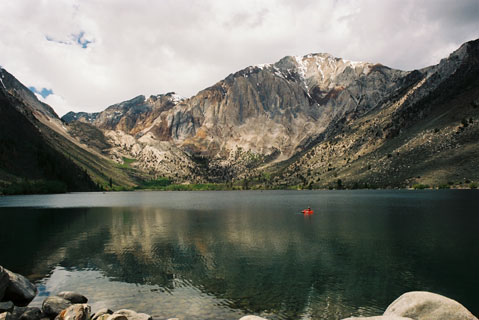
The UC operates two facilities in the East Sierra Nevada mountain range: the Sierra Nevada Aquatic Research Lab (SNARL) and Valentine Camp. The two reserves — a former Bureau of Sport Fisheries and Wildlife facility built in the 1930s and a family estate purchased in 1917, respectively — joined the UC system in 1973 and ’72 and jointly compose the Valentine Eastern Sierra Reserve (VESR). Entry is by permission only, and there are no public exhibits.
As water levels recede across the state, the work conducted at SNARL, which is nestled along Convict Creek near Mammoth, has never been more vital. Few regions have seen the kind of wide-scale water diversions like those that have taken place in the basins of Mono Lake and Owens Valley, landscapes upon which many water battles have unfolded. In fact, SNARL’s research on Mono Lake ecology was crucial to informing the state water board’s decisions to attempt to prevent further degradation of Mono Lake. “Without the long-term elevation range data sets, the courts and state water board would have largely been flying blind,” said Dan Dawson, director of both reserves.
At present, the facility is performing a joint study with the Jet Propulsion Laboratory funded by NASA’s airborne Snow Observatory on developing remote water sensors for aircraft that can very precisely measure the amount of water stored in a watershed. At the Valentine Camp facility, situated on 156 acres of subalpine meadowlands, experiments have allowed researchers to study the ways in which plants communicate with one another — including recent groundbreaking work on sagebrush by Rick Karban at UC Davis — as well as how the changing climate is affecting the mountain biomes. “Climate change is real,” said Dawson, “and the question is, how do different ecosystems and different plant and animal communities respond — with resistance or resilience to change?”
Research is also helping scientists better understand the decline of the mountain yellow-legged frog, once the most-populous vertebrate in the Sierra Nevada but now endangered due to the chytrid fungus. Dawson says researchers are considering lending the frogs some antifungal agents to preserve pockets of populations in the hopes they may bounce back.



